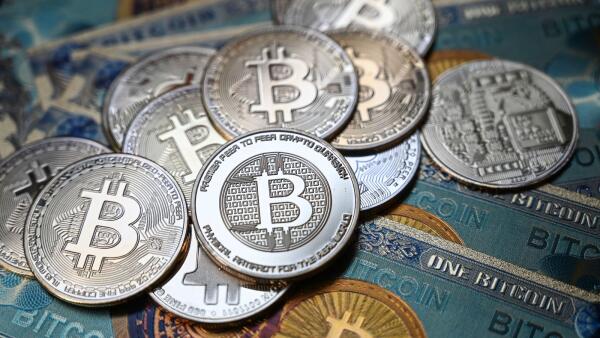
In reaction to the 2008 financial crisis, Bitcoin, which was first presented in 2009, evolved as a decentralized financial system that did away with the need for middlemen or central authorities. Its 21 million unit limited supply is similar to that of natural resources and precious commodities like gold. Because of this set supply limit, Bitcoin's value is intended to increase over time in contrast to traditional currencies.
On April 19, 2024, the fourth round of the bitcoin halving took place. This technological achievement is igniting discussions, especially in light of the increased media focus on recently introduced Bitcoin Spot ETFs in the US. While some see the halving to be an important development that will increase Bitcoin's value as a rare asset in the coming years, others regard it as a technical tweak that speculators are exaggerating in order to drive up the price.
But what exactly is it, and does it really matter?
What is halving?
A change to the fundamental blockchain technology of bitcoin called the halving is intended to slow down the rate at which new bitcoins are created. The anonymous Satoshi Nakamoto intended for the quantity of Bitcoin to be limited to 21 million tokens. The halving mechanism, which reduces the rate at which new bitcoin are issued, was incorporated by Nakamoto into the Bitcoin code. There are already more than 19 million tokens in circulation.
When does it happen?
Every 210,000 blocks are added to the chain, or roughly every four years, there is a halving event. The purpose of this built-in function is to control inflation. This event functions as a built-in inflation control mechanism in the design of Bitcoin. Projections show that the last Bitcoins will be mined around 2140, with about 19.5 million having been mined to date and a maximum supply set at 21 million. Merely 1.5 million Bitcoins are anticipated to be created in the next 116 years, which, from a technical point of view, indicates limited inflation that will persist.
What happened at this halving?
Following the halving, the price of bitcoin remained stable at $63,000, with the rate of new bitcoin creation decreasing to 3.125 per minute.
Bitcoin halvings will occur every 210,000 blocks until all 21 million coins have been mined, which is expected to happen around 2140.
Impact on the medium- to long-term pricing of bitcoin
Regarding its possible impact on Bitcoin's market value, mining operations, profitability, and wider ramifications for the global crypto asset ecosystem, there is no shortage of conjecture. Now let's investigate whether it does have an effect.
Every reward decrease that aims to maintain the value and scarcity of Bitcoin presents difficulties for miners' profitability. They have to balance declining profits with growing operating costs, which implies that a rise in the market price is necessary to maintain miners' financial interest.
Vijay Valecha, Chief Investment Officer, Century Fianancial
The price of bitcoin has not increased as a result of prior halvings, according to any evidence. To try and obtain an advantage, merchants and miners have examined previous halvings.
When did Bitcoin last halve? What occurred then?
On May 11, 2020, Bitcoin underwent its most recent halving event, which reduced mining incentives by 50% from 12.5 new bitcoin per block to 6.25 bitcoin. The coin's price increased from $6877.62 on April 11 (one month prior to the halves) to $8821 at the time of the event, indicating a positive scenario brought about by the reduction in supply. The price increased despite noticeable volatility, hitting $64,000 in April 2021.
Comparable trends were noted in 2012 and 2016, the two prior halvings. The halving event resulted in the largest upward trend, and even if the value significantly declined 12–17 months later, the price was still far higher than it was before the halving.
But there were a lot of reasons for Bitcoin's sudden increase, and there's not proof that the halving was the only one. A large portion of the 2020 spike was also contributed by variables like loose monetary policy and stay-at-home individual investors putting more cash into cryptocurrencies.
What can we conclude from the above data?
Because fewer new coins are being created, Bitcoin's halving occurrences have historically increased the value of the cryptocurrency and created a bull market. Prices are predicted to rise because to the projected 50% reduction in the amount of fresh Bitcoin supply following the 2024 halving event. However, because of the intricate mechanics of the Bitcoin market, it can be difficult to attribute price fluctuations exclusively to halving events. Some contend that the market may already be anticipating this, even if previous halvings indicate a bullish effect. Furthermore, projections are difficult due to the scant empirical evidence (only three data points) on previous halvings.
After the halving, questions surface about the profitability of mining, which could drive miners to leave and endanger the security of the Bitcoin network.
Bitcoin's limited supply continues to be a major factor in its value, drawing long-term investors despite possible negatives. Some contend that scarcity increases the value of Bitcoin, while others think that any effect is already accounted for in pricing, making price prediction more difficult. However, risk assets like Bitcoin may see a short-term increase due to expectations that the US Federal Reserve will adopt a dovish stance following the most recent non-farm payrolls report.
Traditional financial firms are starting to develop their own Bitcoin Spot ETFs to participate in this market as Bitcoin is now perceived as a buffer against traditional market volatility.
In conclusion, it is anticipated that the most recent Bitcoin halving will have an effect on the whole cryptocurrency ecosystem, making it more than just a technical occurrence. Corporates and investors need to be aware of developments and take possible ramifications into account. In addition, it's becoming simpler to enter this market thanks to the growth of Bitcoin Spot ETFs, which is receiving more and more attention from the media.
Post a comment
Hot Categories
Recent News
Cristiano Ronaldo's Portugal Retirement Stance Clear With 2026 World Cup Plan: Report
- Jul 12, 2024
- 11 months ago
Father's Day in the UAE: A chef in Dubai discusses the morals he wants to instill in his kid
- Jun 30, 2024
- 11 months ago
Daily Newsletter
Get all the top stories from Blogs to keep track.




0 comments